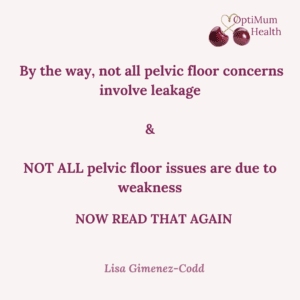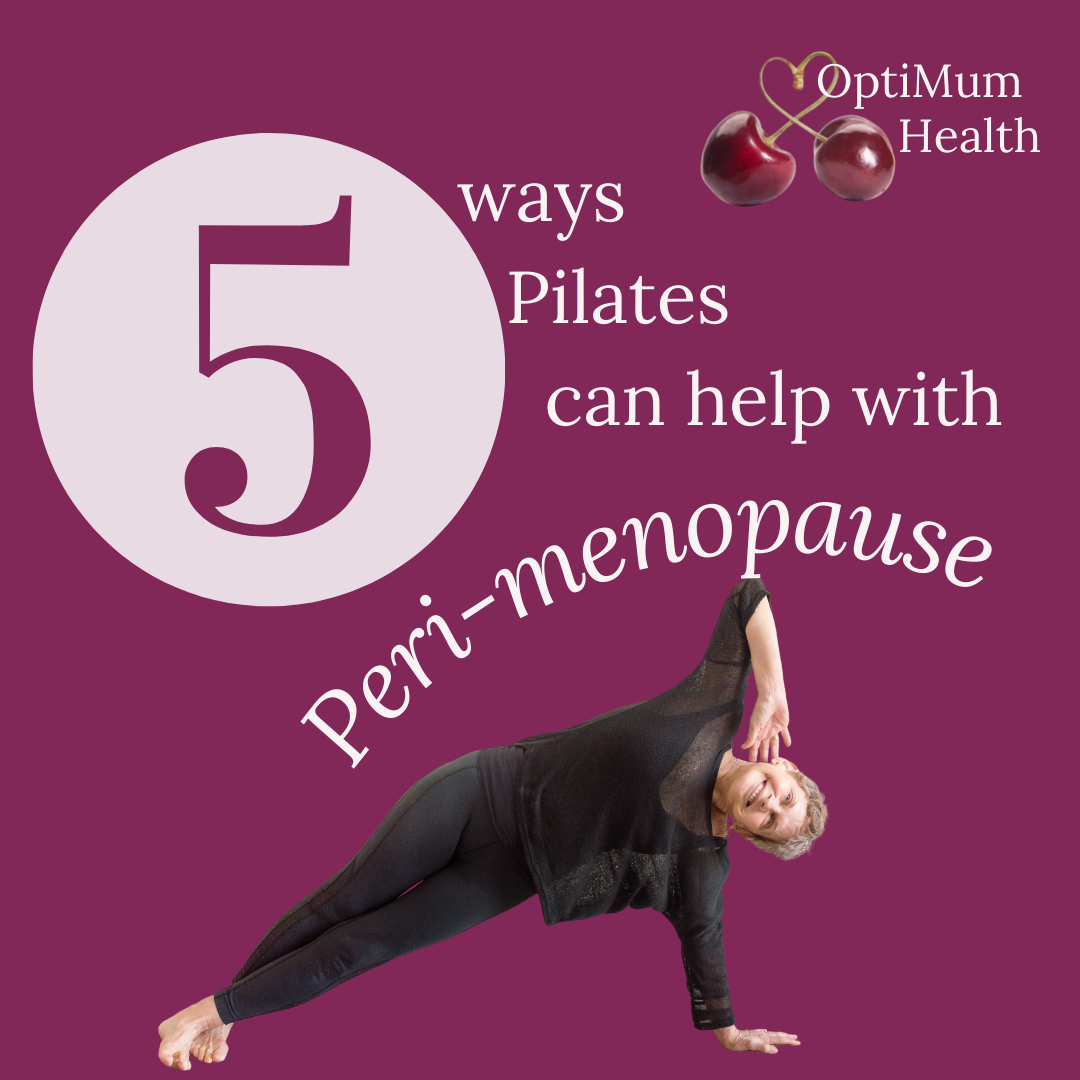5 ways women risk their health by not solving bladder weakness & pelvic floor issues
Bladder weakness is something that seems to be relatively common amongst women. Various research indicates around 1 in 3 women will encounter leakage – and similar figures apply even amongst highly trained athletes.
But this isn’t just about bladder weakness.
Pelvic floor dysfunction and concerns may show up in a number of ways including:
- faecal incontinence
- worrying about leaking urine
- heaviness or dragging sensations in the pelvis
- a feeling of something bulging into, or out of the vagina
- pelvic pain
- persistent low back pain that is not eased through other therapies
It’s all very personal. And these symptoms can make a woman feel vulnerable, embarrassed, “dirty” and defeminised.
So why don’t women take action to deal with these symptoms – other than just joking about it and resorting to incontinence pads?
You can watch this video on:
- why women aren’t seeking help
- what the 5 major risks of not dealing with bladder weakness and pelvic floor issues are
- 5 simple steps to take now that will help your symptoms
or, if you prefer, scroll down past the video to carry on reading.
1. Why are women taking these 5 major risks?
Before we dive into the 5 major risks women are taking in not seeking solutions to reduce bladder weakness and pelvic floor issues I personally think we need to understand why women are unknowingly taking these risks.
Through my work with women over the last 9 years plus feedback through my social media pages on Facebook and Instagram 5 common reasons appear:
1. “I don’t want to burden doctors…they’ve got enough on at the moment“
is one very common response. Yet even amongst those women that did speak to their doctors there’s a regular response received of “it’s just one of those things, don’t worry about it”.
Now let’s be clear – I don’t want you to worry. But I do want you to take action, get the right support and feel confident in your own body for years to come. So ignoring this issue is not the right approach.
Don’t be fobbed off!!! If anything doesn’t feel right for you, or represents a change from whatever is normal for you, ask for help – see the solutions section below for more on what to do if you do get told “it’s just one of those things”
2. Many women accept that bladder weakness is “just one of those things”,
especially after having a baby and when ageing through the menopause. It’s also one of those things we can help with though…you don’t have to put up with this!! You can grab my guide to pee-free sneezes (also works for coughing and laughing too) by clicking here
3. “I’m just too embarrassed to talk about it to ANYONE“
sound familiar? If going for a smear test makes you quake in your boots, the thought of exposing your concerns about your nether regions may feel like a step too far – am I right?
4. “I didn’t know there were things that could be done to help – I’d heard about the scare stories around surgery and thought that was the only option”
Incontinence pad and discreet underwear companies omit to mention in their mainstream adverts that there are non-surgical options to reduce bladder weakness and other pelvic floor issues. So it’s not surprising that many women simply don’t know help is available for these symptoms.
5. Don’t know who to ask!
This one is totally understandable. Even if you’ve been brave enough to talk to your GP or nurse practitioner about this – if you haven’t been referred on for further support, who should you ask next? Keep reading!

So what are the major risks of ignoring bladder weakness and other pelvic floor symptoms?
Let’s dive in and find out.
Please note these are not in any particular order of priority – you may be facing one or several of these risks. I offer simple steps to reduce these risks in the next section too.
1. Pelvic floor issues won’t fix themselves

Your pelvic floor goes through a LOT in a day
- supporting the organs in the pelvis (including the bladder and rectum)
- managing the pressure through the torso
- providing core stabilisation as part of the overall musculature
Just lifting your head off the pillow engages your pelvic floor. Going from sitting to standing exerts more pressure on the pelvic floor than a sit-up.
Your pelvic floor is part of a dynamic system that doesn’t get a break in a normal day.
Pelvic floor issues including bladder weakness, can be a culmination of
- your pelvic floor needing some TLC (this may be strengthening work and/or release work),
- your pelvic floor needing to co-ordinate with other parts of the body
- increased pressure down into the pelvic floor (for example due to breath holding or poor movement form)
- straining (on the toilet in particular, but also in lifting and moving about every day)
and more
To feel a change we need to make a change.
Bladder weakness, left untreated can get progressively worse. So can prolapse.
It’s never too late to take action and the best time to take action is now. Just to be clear here, incontinence pads may be a support but they are not the action I’m talking about here. Proactive steps to support your pelvic floor, pressure management and body are required.
2. Loss of confidence
This one actually makes me want to cry 😭😢😭😢😭😢😭😢.
Hearing a woman say she “doesn’t feel like a woman any more” and feels she has to stop doing things she loves, wearing clothes to cover up – they all massively impact on how a woman shows up in her life and how she feels in herself.

I hate that women feel “broken” when they encounter pelvic floor issues.
If you broke your leg, you’d acknowledge your leg was broken. Listen to advice, work on your rehab. Sure it would inconvenience you but it wouldn’t define you as a person.
Pelvic floor issues differ here.
They massively impact on how a woman sees herself.
Please hear this – you are not broken. There are things you can do. This won’t get better on it’s own but you can support your body through this.
The world needs confident women – don’t let your pelvic floor or bladder weakness stop you from being one.
3. Feeling uncomfortable, self-conscious and potentially even pain
Would you put up with feeling discomfort or pain in your shoulder? What about your hip, back, knee or foot?
I’m guessing the answer is “no”.
In putting up with these feelings in our pelvis we start to impact how we move and even how much we move. This has a direct impact on all aspects of our health:
- physical
- emotional
- mental
Leaving pelvic floor issues “well alone” increases the chances of these sensations negatively affecting your health. Mental health is increasingly on people’s agendas and has become a real buzz word. For very good reason.
Don’t let inaction over pelvic floor issues and bladder weakness dent your mental health.
4. Impacts on your relationship
If you’re worried about
- bladder weakness
- “fanny farts” or queefing
- something looking different down there
- pain during intercourse
- lack of sensation during intercourse
- feeling inadequate sexually
then pelvic floor issues are going to impact your relationship with yourself and your partner. After having a baby, women are almost “excused” from “sexual duties”. But perimenopause and post menopause are another time when pelvic floor issues can proliferate.
Declining sex hormones in both of these periods of womanhood can impact on how your genital area feels and your libido may be lower than usual for you too.
Add to this fear of sex causing pain or not “measuring up” to your previous performances and it’s a heady cocktail for feeling inadequate.
Women can start to isolate themselves from their partners in an effort to insulate themselves from what’s happening in this intimate area of their body.
Crumbling relationships through lack of communication over pelvic floor issues is such a shame – a needless shame. Talk about it. Ask for help.
5. Increased risk of heart and bone disease
So this risk may sound a bit melodramatic.
How can bladder weakness and pelvic floor issues contribute to heart and bone disease??? I mean surely that’s clickbait right?
Well, let’s talk that through.
The amount and type of movement a woman does affects her heart health and bone health. This is increasingly true as women age. Through perimenopause and beyond, women’s risk of heart and bone disease increase significantly as production of estrogen declines.
If a woman moves less because she is worried about
- worried about leakage
- things feeling heavy or draggy in her pelvis
- a prolapse she has been told about or suspets
- persistent low back pain that is on her mind all the time
then her overall health is directly affected.
Our heart and bones need movement through both everyday activity and exercise for health and longevity.
Now some women may have been told “not to squat” or “avoid lifting weights” or stop other forms of activity because of their pelvic floor symptoms.
Personally I disagree with this advice.
Getting on and off the toilet requires a squat of sorts. So does sitting down and getting up off the sofa.
We need to lift wet washing loads up from the washing machine.
Put shopping in the boot of our car.
We need to take care of our heart and bone health.
So I say let’s coach women to support their pelvic floor through movement.
Sure that movement may look different, initially at least – but let’s get women moving as confidently as possible to deal with everyday life AND to preserve their heart and bone health for long-life.
Yes we need pelvic floor exercises – but we need movement too, not just sitting and squeezing!
5 things you can do to improve your pelvic floor symptoms
1. Do your pelvic floor exercises.
I wholeheartedly recommend seeing a female health physiotherapist. You can ask your GP to refer you to a female health physiotherapist during your appointment, especially if they are not sympathetic or supportive of your symptoms.
If you’d like to know more about what happens during an appointment with a female health physio please click here.
The NHS Squeezy app is available on Smartphones and you can also grab my guide to pee-free sneezes (also works for coughing and laughing too) by clicking here.
If you’re tempted to buy a pelvic floor toner – you might want to read my guide first on whether they’re worth your money.
2. Deal with 💩 constipation💩
Constipation is the enemy of the pelvic floor. If a regular bowel motion for you means pooping once a week, we need to get things moving! Ideally we should be pooping every 1-2 days.
What’s more we want to avoid straining in passing that bowel motion. You can access a video on how to support your pelvic floor with easier bowel motions in my Confident Coughs guide, by clicking here.
Not pooping regularly means the weight bearing down on the pelvic floor between poops is increased. Effectively the pelvic floor is having to carry much more crap around for you all day long!
Straining to do a poo also exerts a great deal of pressure on those pelvic floor muscles as well as bearing down on the pelvic organs.
Taking steps to reduce constipation helps take a load off your pelvic floor.
3. Manage your weight
Being overweight not only increases the load on your pelvic floor but can change your centre of gravity too. This can change the pressure down into your pelvic floor too.
Neither of these situations are supporting for your pelvic floor and may increase that sensation of bladder weakness, along with other symptoms too.
Reducing your weight using an approach to nutrition that feels relatively easy for you to stick to is the way ahead here. Along with adding in more daily movement and exercise that suits your energy, fitness and pelvic floor too.
4. Breathe when you move
Breathing is highly recommended 🤪. Yet many hold their breath when completing tasks or exercise that challenges their balance and/or strength.
Holding the breath affects the pressure into the abdominal cavity and down into the pelvic floor.
I have a fairly simply remedy to this one.
Are you ready?
Count. out. loud.
If you’re doing exercises, count each repetition – if you can count on the hardest part of the exercise (that’s driving up from a squat or pushing up from a press up for example).
Can’t get the hang of counting?
or need something to help avoid breath holding during everyday tasks?
Sing!
Sing out loud – if you’re singing, you’re breathing. Job done!
Fun fact: there’s a link between your voice box and your pelvic floor.
Try this – make the highest pitched noise you can. Do it again and notice how it feels through your pelvic floor. Did it feel like it was lifting or tightening? No try the deepest note you can make – did that feel like your pelvic floor was relaxing? Cool or what!
5. Let go of tension and start engaging.

If you’ve read any of my ‘stuff’ before you may have already heard this, but it’s worth re-stating.
Not all pelvic floor issues are due to weakness.
(This is another reason for recommending seeing a female health physio – to assess what is going on for you.)
A number of factors can mean that your pelvic floor muscles are “holding on” too much of the time, such as:
- frequent and/or intense training
- holding belly in to look slimmer
- wearing tight fitting clothing much of the time
- high heel wearing
- stress related muscular tension in the abdomen, back and/or pelvic floor
We can’t just look at your pelvic floor
And we can’t assume it just needs strengthening.
Let it go. Understand what your “ground level” is and be able to relax to that. Then squeeze and lift from there.
But remember to relax back to ground level after each squeeze.
6. Get help and support.
Ok – so I said 5 things to help but here’s number 6. A bonus.
And perhaps the most obvious.
Ask for help.
I mention seeing a female health physio above. Coaches such as myself work in conjunction with female health physios to help you feel confident in your body and move WITH your pelvic floor.
Hand on heart, talking about your pelvic floor function is no different to talking about shoulder, hip or foot movement to me. (And by the way all of those can support your pelvic floor connection too!).
So if you’d like to starting talking, look for solutions and take action to support your body right through to your pelvic floor then please get in touch.

